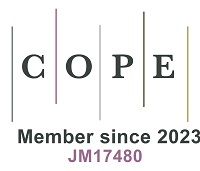REFERENCES
1. Filonchyk M, Peterson MP, Zhang L, Hurynovich V, He Y. Greenhouse gases emissions and global climate change: examining the influence of CO2, CH4, and N2O. Sci Total Environ 2024;935:173359.
2. Rogelj J, den Elzen M, Höhne N, et al. Paris agreement climate proposals need a boost to keep warming well below 2 °C. Nature 2016;534:631-9.
3. Ward DS, Mahowald NM. Contributions of developed and developing countries to global climate forcing and surface temperature change. Environ Res Lett 2014;9:074008.
4. Wei T, Yang S, Moore JC, et al. Developed and developing world responsibilities for historical climate change and CO2 mitigation. Proc Natl Acad Sci USA 2012;109:12911-5.
5. Shafique M, Azam A, Rafiq M, Luo X. Life cycle assessment of electric vehicles and internal combustion engine vehicles: a case study of Hong Kong. Res Transp Econ 2022;91:101112.
6. Bui M, Adjiman CS, Bardow A, et al. Carbon capture and storage (CCS): the way forward. Energy Environ Sci 2018;11:1062-176.
7. Wang Y, Guo CH, Chen XJ, et al. Carbon peak and carbon neutrality in China: goals, implementation path and prospects. China Geol 2021;4:720-46.
8. Xi JP. Building on past achievements and launching a new journey for global climate actions. 2020.
9. Cai B, Lu J, Wang J, et al. A benchmark city-level carbon dioxide emission inventory for China in 2005. Appl Energy 2019;233-4:659-73.
10. Reckien D, Flacke J, Dawson RJ, et al. Climate change response in Europe: what’s the reality? Analysis of adaptation and mitigation plans from 200 urban areas in 11 countries. Clim Chang 2014;122:331-40.
11. Heidrich O, Dawson RJ, Reckien D, Walsh CL. Assessment of the climate preparedness of 30 urban areas in the UK. Clim Chang 2013;120:771-84.
12. Yang X, Wang XC, Zhou ZY. Development path of Chinese low-carbon cities based on index evaluation. Adv Clim Chang Res 2018;9:144-53.
13. Wang WZ, Liu LC, Liao H, Wei YM. Impacts of urbanization on carbon emissions: an empirical analysis from OECD countries. Energy Policy 2021;151:112171.
14. Wei T, Wu J, Chen S. Keeping track of greenhouse gas emission reduction progress and targets in 167 cities worldwide. Front Sustain Cities 2021;3:696381.
15. Rosenzweig C, Solecki W, Hammer SA, Mehrotra S. Cities lead the way in climate-change action. Nature 2010;467:909-11.
16. Dhakal S. Urban energy use and carbon emissions from cities in China and policy implications. Energy Policy 2009;37:4208-19.
17. Zhu XH, Lu KF, Peng ZR, He HD, Xu SQ. Spatiotemporal variations of carbon dioxide (CO2) at urban neighborhood scale: characterization of distribution patterns and contributions of emission sources. Sustain Cities Soc 2022;78:103646.
18. Zhang M, Tan S, Zhang C, Chen E. Machine learning in modelling the urban thermal field variance index and assessing the impacts of urban land expansion on seasonal thermal environment. Sustain Cities Soc 2024;106:105345.
19. Wang R, Gao W, Zhou N, Kammen DM, Peng W. Urban structure and its implication of heat stress by using remote sensing and simulation tool. Sustain Cities Soc 2021;65:102632.
20. Zhang M, Zhang Z, Tong B, Ren B, Zhang L, Lin X. Analysis of the coupling characteristics of land transfer and carbon emissions and its influencing factors: a case study of China. Front Environ Sci 2023;10:1105552.
21. Fang G, Gao Z, Tian L, Fu M. What drives urban carbon emission efficiency? - Spatial analysis based on nighttime light data. Appl Energy 2022;312:118772.
22. Xu J, Wang J, Li R, Yang X. Spatio-temporal effects of urbanization on CO2 emissions: evidences from 268 Chinese cities. Energy Policy 2023;177:113569.
23. He X, Guan D, Yang X, Zhou L, Gao W. Quantifying the trends and affecting factors of CO2 emissions under different urban development patterns: an econometric study on the Yangtze river economic belt in China. Sustain Cities Soc 2024;107:105443.
24. Huang Y, Ou J, Deng Z, Zhou W, Liang Y, Huang X. Peak patterns and drivers of city-level daily CO2 emissions in China. J Clean Prod 2024;469:143206.
25. Scarpelli TR, Jacob DJ, Grossman S, et al. Updated global fuel exploitation inventory (GFEI) for methane emissions from the oil, gas, and coal sectors: evaluation with inversions of atmospheric methane observations. Atmos Chem Phys 2022;22:3235-49.
26. Crippa M, Guizzardi D, Schaaf E, et al. GHG emissions of all world countries. Publications Office of the European Union; 2023.
27. Janssens-Maenhout G, Crippa M, Guizzardi D, et al. EDGAR v4.3.2 global atlas of the three major greenhouse gas emissions for the period 1970-2012. Earth Syst Sci Data 2019;11:959-1002.
28. Crippa M, Solazzo E, Huang G, et al. High resolution temporal profiles in the emissions database for global atmospheric research. Sci Data 2020;7:121.
29. Scarpelli TR, Jacob DJ, Octaviano Villasana CA, et al. A gridded inventory of anthropogenic methane emissions from Mexico based on Mexico’s national inventory of greenhouse gases and compounds. Environ Res Lett 2020;15:105015.
30. Hu C, Griffis TJ, Xia L, et al. Anthropogenic CO2 emission reduction during the COVID-19 pandemic in Nanchang City, China. Environ Pollut 2022;309:119767.
31. Maasakkers JD, Jacob DJ, Sulprizio MP, et al. Global distribution of methane emissions, emission trends, and OH concentrations and trends inferred from an inversion of GOSAT satellite data for 2010-2015. Atmos Chem Phys 2019;19:7859-81.
32. Lyon DR, Zavala-Araiza D, Alvarez RA, et al. Constructing a spatially resolved methane emission inventory for the barnett shale region. Environ Sci Technol 2015;49:8147-57.
33. Lauvaux T, Miles NL, Deng A, et al. High-resolution atmospheric inversion of urban CO2 emissions during the dormant season of the Indianapolis Flux Experiment (INFLUX). J Geophys Res Atmos 2016;121:5213-36.
34. Turner AJ, Shusterman AA, Mcdonald BC, Teige V, Harley RA, Cohen RC. Network design for quantifying urban CO2 emissions: assessing trade-offs between precision and network density. Atmos Chem Phys 2016;16:13465-75.
35. Xu YQ, Luo YL, Fu GY, et al. Status of developing high-precision greenhouse gas emission inventory in China. Environ Monit China 2023;39:52-9.
36. Sun S, Sun L, Liu G, et al. Developing a vehicle emission inventory with high temporal-spatial resolution in Tianjin, China. Sci Total Environ 2021;776:145873.
37. Li Y, Lv C, Yang N, Liu H, Liu Z. A study of high temporal-spatial resolution greenhouse gas emissions inventory for on-road vehicles based on traffic speed-flow model: a case of Beijing. J Clean Prod 2020;277:122419.
38. Azhari A, Abdul Halim ND, Othman M, et al. Highly spatially resolved emission inventory of selected air pollutants in Kuala Lumpur's urban environment. Atmosp Pollut Res 2021;12:12-22.
39. Sun C, Wang B, Miao H. Spatiotemporal dynamics of CO2 emissions: a case study of the "New Yangtze River Delta" in China. Environ Sci Pollut Res Int 2023;30:40961-77.
40. Cui X, Lei Y, Zhang F, Zhang X, Wu F. Mapping spatiotemporal variations of CO2 (carbon dioxide) emissions using nighttime light data in Guangdong province. Phys Chem Earth Parts A/B/C 2019;110:89-98.
41. China City Greenhouse Gas Working Group. China city carbon dioxide emission dataset. 2020. Available from: https://www.cityghg.com/toArticleDetail;jsessionid=52C5671AF69E4CB1E74D601EB4BAD486?id=203 [Last accessed on 19 Sep 2024].
42. Tianyancha. Available from: https://www.tianyancha.com/ [Last accessed on 19 Sep 2024].
43. Bondarenko M, Kerr D, Sorichetta A, Tatem AJ. Census/projection-disaggregated gridded population datasets, adjusted to match the corresponding UNPD 2020 estimates, for 183 countries in 2020 using Built-Settlement Growth Model (BSGM) outputs. University of Southampton, UK: WorldPop; 2020.
44. Earth Observation Group. See the world at night. Available from: https://eogdata.mines.edu/products/vnl/ [Last accessed on 19 Sep 2024].
45. Foundation O. OpenStreetMap data extracts. Available from: https://download.geofabrik.de/ [Last accessed on 19 Sep 2024].
46. China MoHaU-RDotPsRo. Code for design of urban road engineering. Beijing: China Architecture & Building Press; 2012. pp.8-9.
47. China MoTotPsRo. Technical standard of highway engineering. Beijing: China Communication Press; 2003. pp.1-9.
48. MarineTraffic. Automatic identification system. Available from: https://www.marinetraffic.com/ [Last accessed on 21 June 2024].
49. Damien SM, Mark F. MCD12Q1 v061 - MODIS/Terra+Aqua land cover type yearly L3 global 500 m SIN grid. Available from: https://lpdaac.usgs.gov/products/mcd12q1v061/ [Last accessed on 19 Sep 2024].
50. He J, Wang Z, Zhao L, et al. Gridded emission inventory of organophosphorus flame retardants in China and inventory validation. Environ Pollut 2021;290:118071.
51. Hogue S, Marland E, Andres RJ, Marland G, Woodard D. Uncertainty in gridded CO2 emissions estimates. Earth's Future 2016;4:225-39.
52. Czigler T, Reiter S, Schulze P, Somers K. Laying the foundation for zero-carbon cement. McKinsey & Company; 2020. Available from: https://www.mckinsey.com/industries/chemicals/our-insights/laying-the-foundation-for-zero-carbon-cement [Last accessed on 19 Sep 2024]
53. Xu Q, Dong YX, Yang R, Zhang HO, Wang CJ, Du ZW. Temporal and spatial differences in carbon emissions in the Pearl River Delta based on multi-resolution emission inventory modeling. J Clean Prod 2019;214:615-22.
54. Gurney KR, Mendoza DL, Zhou Y, et al. High resolution fossil fuel combustion CO2 emission fluxes for the united states. Environ Sci Technol 2009;43:5535-41.








